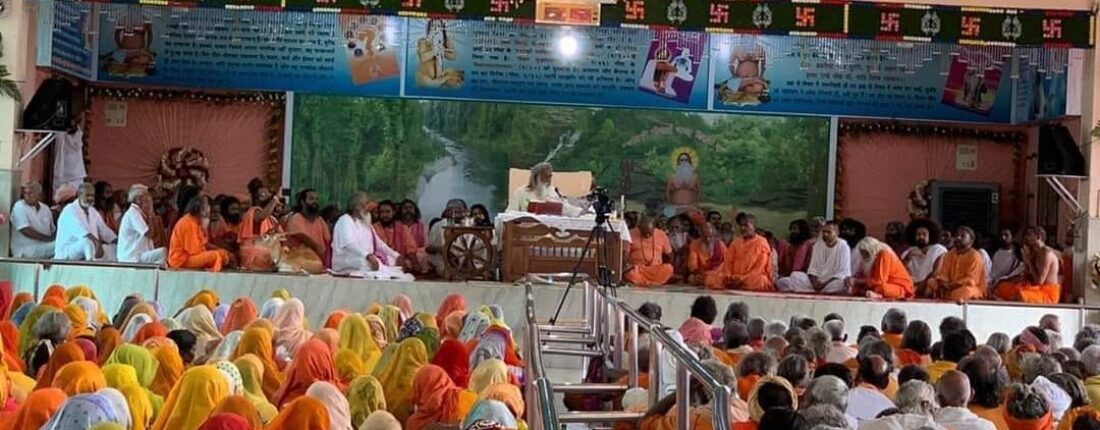Day and night are used as symbols of knowledge and ignorance in metaphysics. This can be very transparently seen through metaphysical vision of Bhagavad Gita.
Lord Krishn sings:
“Yogi who know the reality of one day of Brahma
which is of the duration of a thousand ages ( yug)
and of one night which is also equal to a thousand ages
know the essence of time.”
Brahma comes into being when the mind is endowed with the knowledge of God (brahmvitt), whereas the mind which has achieved the state of Brahmvidwarisht marks the crowning point of Brahma. The mind which is possessed of knowledge is Brahma’s day. When knowledge acts upon the mind, the yogi makes his way towards God and the innumerable predilections of his mind are suffused with his radiance.
On the other hand, when the night of ignorance prevails, the mind and heart are swamped with the contradictions of maya between manifold impulses. This is the furthest limit of light and darkness. Beyond this there is neither ignorance nor knowledge, because the final essence that is God is now directly known. Those yogi who know this essence know the reality of time. They know when the night of ignorance falls and when the day of knowledge dawns, and also the limits of the dominance of time-the point to which it can pursue us.
The sages of yore described the inner realm as thought or sometimes as intellect. In the course of time, functions of the mind were divided into four categories which came to be known as mind, intellect, thought and ego, although impulses are in fact endless. It is within the mind that there are the night of ignorance and also day of knowledge. These are the days and nights of Brahma. In the mortal world, which is a form of darkness, all beings lie in a state of insensibility.
Roaming about amidst nature, their mind fails to perceive the radiant God. But they who practice yog have woken up from the slumber of insensibility and begun to make their way towards God.
According to Goswami Tulsidas in the Ram Charit Manas, his version of the Ramayana, even the mind possessed of knowledge is degraded to the state of ignorance by evil association. But it is re-imbued with light by virtuous company. This alternation of spiritual ascendancy and decline continues till the moment of attainment. After realization of the ultimate goal, however, there are no Brahma, no mind, no night, and no day. Brahma’s day and night are just metaphors. There is neither a night nor a day of a thousand years, nor even a Brahma with four faces.
The brahmvitt, brahmvidwar, brahmvidwariyan, and brahmvidwarisht, four successive stages of mind, are his four faces, and the four main divisions of the mind are his four ages (yug). Day and night abide in the tendencies and operations of the mind. Men who know this secret understand the mystery of time-how far it pursues us and who can transcend it.
Lord Krishn then goes on to explain the deeds that belong to day as also those that belong to night: what is done in the state of knowledge and that which is done in the obscurity of ignorance.
Lord Krishn adds:
“All manifest beings are born from the subtle body of Brahma
at the outset of his day and are also dissolved in the same
unmanifest body at the fall of his night.”
With the dawning of a day of Brahma’s, that is, with the inception of knowledge, all beings come awake in their unmanifest mind, and it is within the same subtle, unmanifest mind that they lapse into unconsciousness. They are unable to see the Supreme Spirit, but they have an existence. The mind, unmanifest and invisible, is the medium of both consciousness and unconsciousness, of both knowledge and nescience (the lack of knowledge).
“The beings who thus wake up
into consciousness are compelled
by nature to relapse into unconsciousness
with the coming of night and they are then,
O Parth, reborn with the advent of day.”
As long as the mind persists, the succession of knowledge and ignorance goes on. So long as this continues, the seeker is only a worshiper rather than an accomplished sage.
Lord Krishn sings:
“But beyond the unmanifest Brahma there is the eternal,
unmanifest God who is not destroyed
even after the destruction of all beings.”
On the one hand, the mind that is Brahma is imperceptible. It cannot be known by the senses. On the other, there is the eternal, unmanifest Supreme Spirit who is not destroyed even with the destruction of physical beings, or of the invisible Brahma (mind) which gains consciousness with the arising of knowledge and sinks into unconsciousness with the setting of knowledge into the darkness of ignorance.
God exists even after the destruction of inclinations of the mind which wake up in the light of day and fall back into insensibility in the darkness of night. These upward and downward motions of the mind cease only after the attainment of God who is the ultimate abode.
With the realization of the Supreme Spirit, the mind is coloured by him and becomes what he is. This is the point when the mind is annihilated and in its place only the eternal, unmanifest God remains.
“The unmanifest and imperishable God
who is said to be salvation and after realizing whom
one does not come back to the world, is my ultimate abode.”
That eternal unmanifest state is immortal and that is called enlightenment (or attainment) of the supreme goal.
Lord Krishn says, “This is my ultimate abode, after attaining which one does not return to mortal life and is not reborn.”
~Revered Gurudev Swami Adgadanand Jee Paramhans~
©
 _/l\_
_/l\_
Humble Wishes.
~mrityunjayanand~

